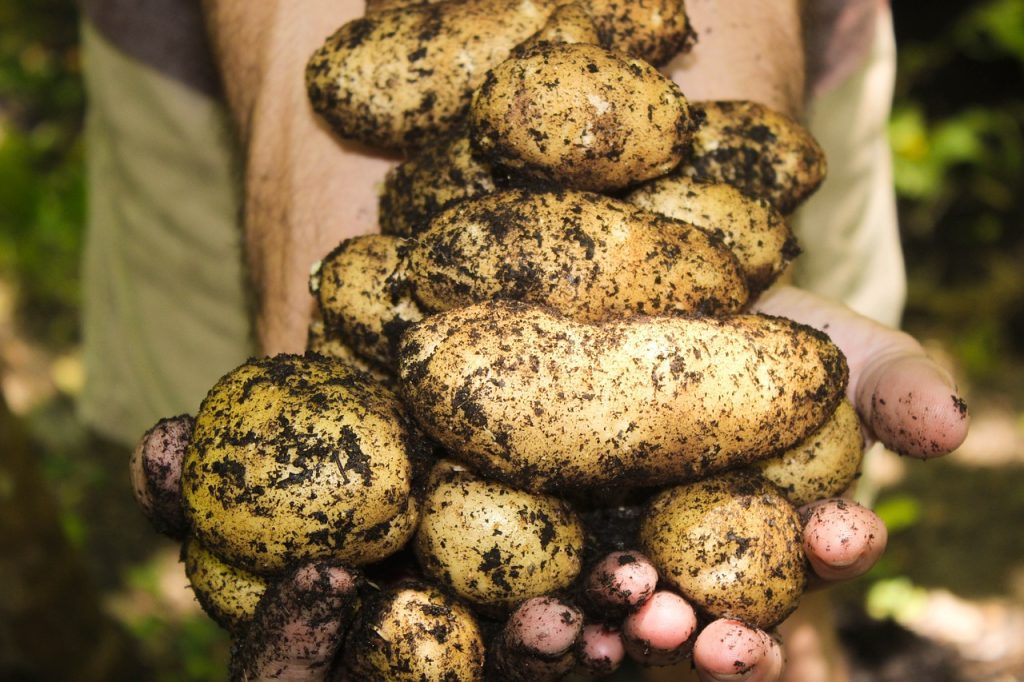If you’re serious about growing your own food, one of the biggest questions is: “How much should I plant to actually feed myself?”
You don’t want to waste time growing too much and letting it rot. But you also don’t want to run out of food halfway through the year.
This guide will break down exactly how to calculate the right amount of food to grow based on your diet, space, and climate.
1. Assess Your Annual Food Needs (What You Actually Eat)
Before you plant a single seed, you need to know how much food you consume in a year.
Step 1: Track Your Current Diet
- Keep a food journal for a week (or a month for better accuracy).
- Note how much of each food type (vegetables, grains, fruits, proteins) you eat daily.
For example: If you eat a salad every day, you’ll need at least 5–7 lettuce heads per week.
Step 2: Calculate Yearly Consumption
Here’s a rough estimate for one person (adjust for family size):
| Food | Annual Need (Per Person) |
| Potatoes | 200–250 lbs |
| Carrots | 50–60 lbs |
| Tomatoes | 50–70 lbs (fresh) |
| Leafy Greens | 20–30 lbs |
| Beans | 20–30 lbs (dried) |
Key Takeaway:
- Focus on high-calorie staples (potatoes, yams) if you want true self-sufficiency.
- Grow smaller amounts of perishables (lettuce, herbs) since they don’t store long.
2. Understand Crop Yields (How Much Each Plant Produces)
Not all plants give the same amount of food.
Some, like cassava, produce a ton, while others, like corn, need a lot of space for a modest yield.
– Average Yields for Common Crops:
| Crop | Yield Per Plant | Yield Per 10 ft Row |
| Tomatoes | 10–15 lbs | 50–80 lbs |
| Carrots | 1/4–1/2 lb | 10–15 lbs |
| Zucchini | 8–10 lbs | 40–60 lbs |
| Potatoes | 3–5 lbs | 30–50 lbs |
| Green Beans | 1–2 lbs | 10–20 lbs |
– Factors That Affect Yield:
- Soil quality (poor soil = smaller harvests).
- Sunlight (less than 6 hours = weaker growth).
- Watering (inconsistent watering = lower yields).
💡Pro tip: Use square foot gardening to maximize small spaces (e.g., 1 square foot = 16 carrots).
3. Map Your Growing Space (What Fits in Your Garden?)
You might want to grow 100 lbs of potatoes, but do you have the space?
Step 1: Measure Your Available Space
- Backyard gardens: 100–500 sq ft can feed 1–2 people.
- Raised beds/containers: 4×8 ft beds work well for small families.
- Urban/balcony gardens: Focus on high-yield crops (herbs, greens, cherry tomatoes).
Step 2: Prioritize Based on Space Efficiency
| High-Yield (Small Space) | Low-Yield (Needs Space) |
| Kale | Corn |
| Spinach | Pumpkins |
| Bush Beans | Watermelons |
| Radishes | Wheat |
Rule of Thumb: If space is tight, grow vertical (tomatoes, cucumbers, pole beans).
If you have room, add staple crops (potatoes, squash, grains).
4. Factor in Food Preservation (Make Your Harvest Last)
Growing food is one thing – storing it properly is another.
If you don’t preserve correctly, you could lose half your harvest to spoilage.
– Best Food Preservation Methods:
| Method | Best For | How Long It Lasts |
| Canning | Tomatoes, beans, pickles | 1–5 years |
| Freezing | Berries, greens, herbs | 6–12 months |
| Drying | Herbs, peppers, fruit | 1 year+ |
| Root Cellaring | Potatoes, carrots, beets | 3–6 months |
~ Key Tips:
- Canning is great for long-term storage (but requires equipment).
- Freezing is easiest (blanch veggies first for better quality).
- Drying works well for herbs & spices (use a dehydrator or air-dry).
- Root cellaring keeps potatoes & carrots fresh (cool, dark, humid space).
💡Pro tip: Grow some crops specifically for storage (winter squash, dried beans, onions).
5. Trial and Refinement (Learn From Your First Year)
Nobody gets it perfect the first time.
Your first year will be a learning experience, and that’s okay!
– Common Mistakes to Avoid:
- Overplanting (You don’t need 20 cucumber plants, trust me.)
- Underestimating pests (Deer, rabbits, and bugs WILL find your crops.)
- Ignoring crop rotation (Same plants in the same spot = soil depletion.)
– How to Improve Next Year:
- Keep a garden journal (Track what worked and what failed.)
- Adjust quantities (If you ran out of potatoes, plant 20% more next year.)
- Experiment with new crops (Try one or two new things each season.)
Real-Life Example: Feeding One Person for a Year
Let’s put it all together with a realistic example for one adult.
Sample Self-Sufficiency Plan
| Crop | Amount to Grow | Why? |
| Potatoes | 40 plants (200 lbs) | High-calorie staple |
| Tomatoes | 10 plants (100 lbs) | Fresh eating + canning |
| Carrots | 20 ft row (50 lbs) | Stores well in ground/cellar |
| Green Beans | 15 plants (30 lbs) | Fresh + frozen |
| Kale/Spinach | 10 plants (continuous harvest) | Regular greens supply |
| Winter Squash | 5 plants (50 lbs) | Long shelf life |
Total Space Needed: ~300 sq ft (or 4-5 raised beds)
| 💡Pro tip: Start with half this amount if you’re new, then scale up. |
Final Thoughts
Self-sufficient gardening is a marathon, not a sprint. You won’t get it 100% right the first year and that’s normal.
Here’s what you should takeaway:
- Know your food needs before planting a single seed.
- Understand crop yields so you don’t over/underplant.
- Preserve properly to avoid waste.
- Adjust each year based on what worked.
So you know what to do now. Start small and stay consistent.
